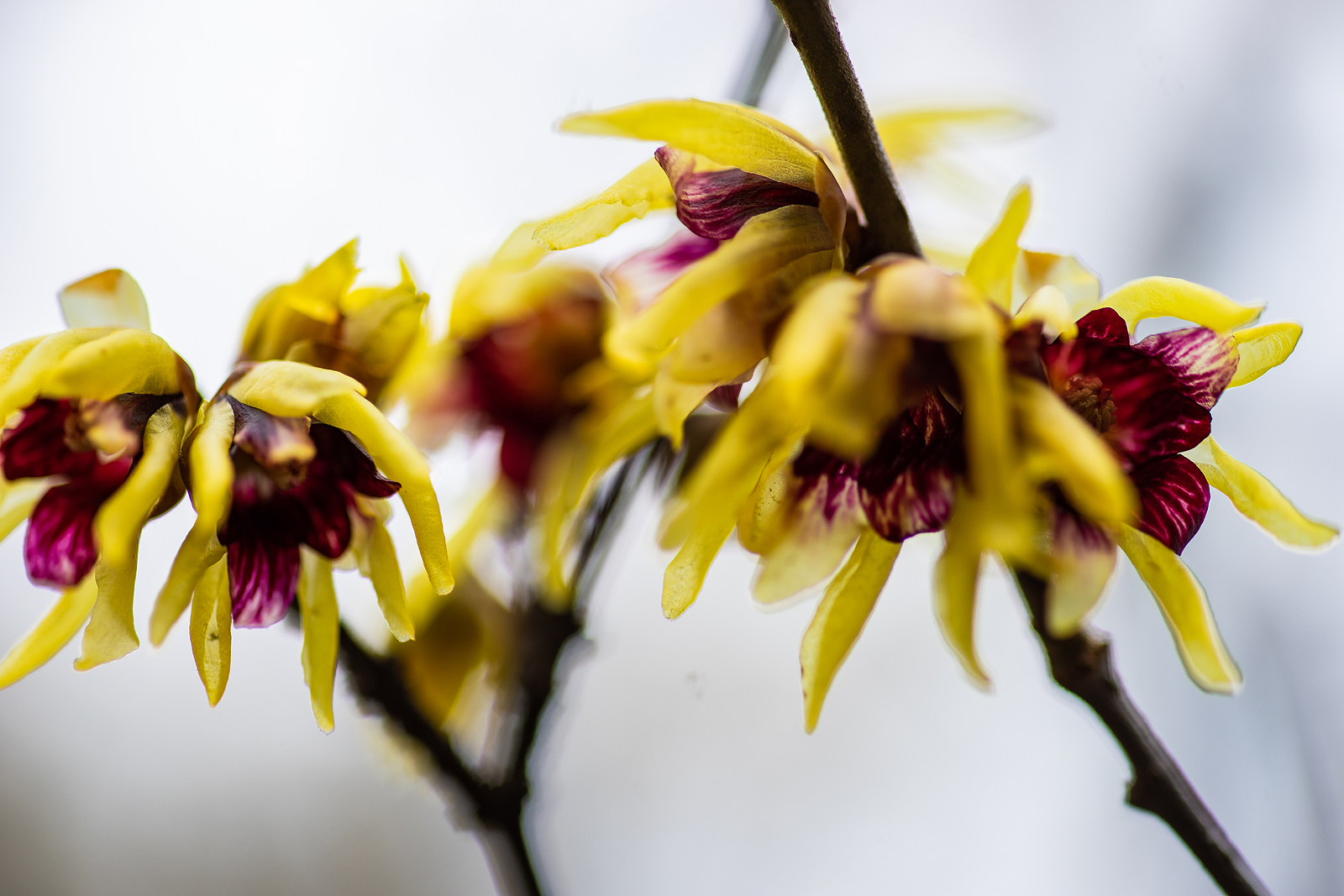Six Late Winter, Early Spring Blooming Shrubs
Some shrubs like to get an early start on the season. Even though it is cold outside, and even snow on the ground, here are six shrubs that will start their bloom season in late winter (even as early as January). These shrubs will reliably bloom into early spring and some into late spring or early summer. Many of these shrubs start their bloom period even before the plant unfurls its leaves.
These shrubs are a good choice for the landscape. For a real pop of color place them in front of an evergreen hedge or against a dark wall or fence where their showy flowers can help liven up dark days.
For as many as nine or ten months of bloom plant these alongside summer and autumn bloomers. They will work in a shrub border where color is the main attraction. So to answer the question: what shrubs bloom in late winter and early spring? Here you go.
To get growing tips for each of these winter and early spring blooming shrubs, just click on the botanical name next to the photo.
 Chimonanthus praecox (wintersweet). Honey scented bowl-shaped blooms in early spring, before shiny leaves. Spreading deciduous shrub or small tree grows to 9 feet tall and wide. Glossy bright green leaves. Plant in full sun. Zones 5-9.
Chimonanthus praecox (wintersweet). Honey scented bowl-shaped blooms in early spring, before shiny leaves. Spreading deciduous shrub or small tree grows to 9 feet tall and wide. Glossy bright green leaves. Plant in full sun. Zones 5-9.
 Corylopsis spp. (winter hazel). Yellow flowers open early in spring and can be damaged by late frosts. Attractive in a woodland setting or with an evergreen background. Plant in sandy soil with generous amounts of peat moss. Grows to 9 feet tall and wide. Provide protection from cold winds. Full sun, partial shade. Zones 6 – 8.
Corylopsis spp. (winter hazel). Yellow flowers open early in spring and can be damaged by late frosts. Attractive in a woodland setting or with an evergreen background. Plant in sandy soil with generous amounts of peat moss. Grows to 9 feet tall and wide. Provide protection from cold winds. Full sun, partial shade. Zones 6 – 8.
 Corylus avellana ‘Contorta’ (Harry Lauder’s walking stick). Pendent yellow catkins are borne in late winter and early spring. Upright or tree-like shrubs with broadly heart-shaped mid-green leaves. Has strongly twisted shoots. Grows to 15 feet tall and wide. Zones 3-9.
Corylus avellana ‘Contorta’ (Harry Lauder’s walking stick). Pendent yellow catkins are borne in late winter and early spring. Upright or tree-like shrubs with broadly heart-shaped mid-green leaves. Has strongly twisted shoots. Grows to 15 feet tall and wide. Zones 3-9.
 Daphne spp. (daphne). Clusters of tiny flowers are handsome, and those of some kinds are fragrant. Although they resemble lilac blooms, they are not as large. Select a position that is well protected from the wind. Does best in light, easily worked soil with considerable humus. Grow 3 to 5 feet tall and about as wide. Zones 4-8.
Daphne spp. (daphne). Clusters of tiny flowers are handsome, and those of some kinds are fragrant. Although they resemble lilac blooms, they are not as large. Select a position that is well protected from the wind. Does best in light, easily worked soil with considerable humus. Grow 3 to 5 feet tall and about as wide. Zones 4-8.
 Hamamelis spp. (witch hazel). Spidery-looking flowers are produced in shades or yellow or copper-red, or sometimes yellow with reddish centers. Most kinds bloom from late winter to early spring. Full sun, partial shade. Grows to 15 feet tall and wide. Zones 5 – 9.
Hamamelis spp. (witch hazel). Spidery-looking flowers are produced in shades or yellow or copper-red, or sometimes yellow with reddish centers. Most kinds bloom from late winter to early spring. Full sun, partial shade. Grows to 15 feet tall and wide. Zones 5 – 9.
 Rhododendron mucronulatum (Korean rhododendron). Dwarf to medium-sized, deciduous azalea with erect form. Funnel-shaped, pinkish-purple, or occasionally white flowers. Grow in full sun. Grows to 1 to 8 feet tall and 3 feet wide. Zones 5-8.
Rhododendron mucronulatum (Korean rhododendron). Dwarf to medium-sized, deciduous azalea with erect form. Funnel-shaped, pinkish-purple, or occasionally white flowers. Grow in full sun. Grows to 1 to 8 feet tall and 3 feet wide. Zones 5-8.
Related articles:







